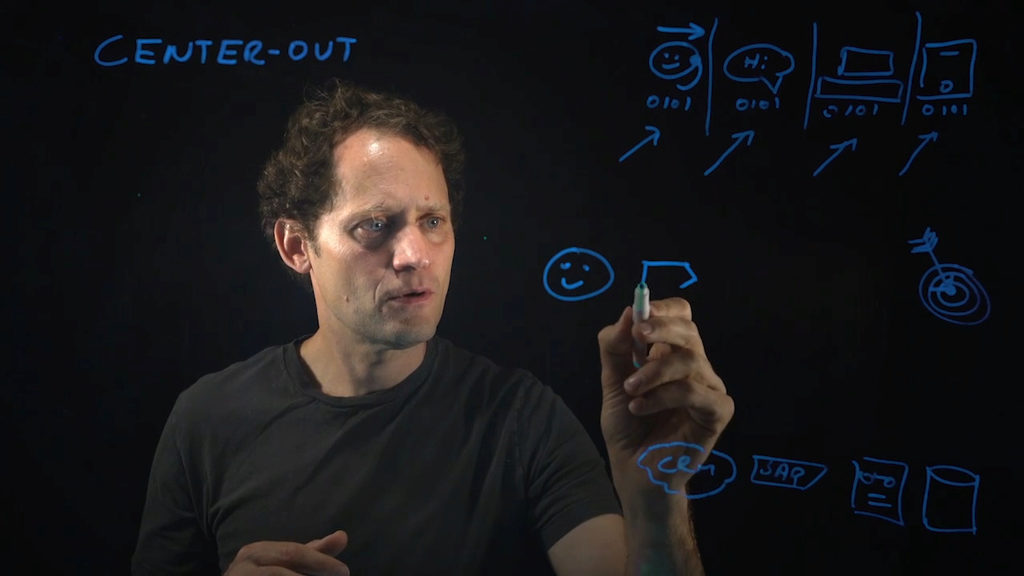
Whiteboard | 04:59
Center-out Explained

Looking for a business architecture that’s designed to make your enterprise more resilient today and stronger tomorrow? Don Schuerman guides you through Pega’s unique approach to Center-out™ digital transformation in this short video.
Part 1 of the "Building a business architecture" video series. Watch Part 2 of the series, “You’ve got to have a brain."
Transcript:
In this series of videos, I'm going to talk to you about building a business architecture, which is a way of structuring your technology around the outcomes you want to achieve for your business and for your customers. And in order to ensure you can both get great results fast, but also sustain that architecture into the future, we believe it's really important that you approach it from the center-out. And this means avoiding some all-too-common mistakes that we see enterprises engage in when they approach their business architectures.
The first mistake is starting in the channel. That is things like your mobile application or your website. Maybe it's your chatbot, or a traditional contact center type channel. And when you start in the channel, you end up embedding your business and your process logic directly into each channel, literally hard coding it into the channel. And this creates all kinds of silos and separations between the channel.
If you've ever spent time on a company's website and then called into the contact center, only to find that the poor agent on the other end of the phone had no idea what it was that you were doing or trying to do, you have smacked into one of those walls. And it makes it really expensive for the enterprise – they have to code each channel independently, and every time you want to make a change, you have to go and make it in multiple places. So it becomes really expensive and slow to respond to changing customer needs, like the kind of world that we're dealing with right now. That is a top-down mistake.
The other mistake is starting from the bottom with your systems, with databases and mainframes and ERP systems. Even modern cloud-based systems sometimes fall into this because at the end of the day, all of the systems down here are effectively databases, and they're really built around products – siloed products – not the end-to-end customer journey. There is a huge amount of complexity down here, and it's really hard and timely and expensive to try to get this to reflect what your customer journey needs to be.
So, while a lot of vendors will tell you they are customer-centric, they're really either channel-centric or data and system centered. A truly customer-centric architecture starts in the center with your customer. More importantly, it starts with the outcomes that that customer is trying to achieve. And then it captures the journey. Or as we like to call it, the microjourney, the elements of a larger customer journey that are tied to a specific outcome. So applying for and getting a loan is a microjourney. Resolving a billing inquiry is a microjourney. And by starting in the center and working out, you're then able to have a common microjourney that runs across all your channels. So your customer gets a consistent experience. And as a business, if you want to make a change, you can change the micro journey and have that be instantly reflected across the channels. The microjourney wraps around all of the complexity and product-centric mess down here at your system level and provides an easy and efficient experience for your customers and your employees.
The impacts of a center-out business architecture are huge. We did a study with Forrester Research on a product called the Customer Decision Hub. It's a AI brain that is really center-out. It works across all channels and across all systems to make recommendations of the next best action for customers. And Forrester found that the average client, over three years, generated $677 million in increased revenue from using Customer Decision Hub, from applying a center-out business architecture. So, a center-out business architecture helps you avoid the mistakes of starting in the channels and starting in the systems. It can deliver incredible results. In our next videos, we're going to talk about exactly how to build it.
